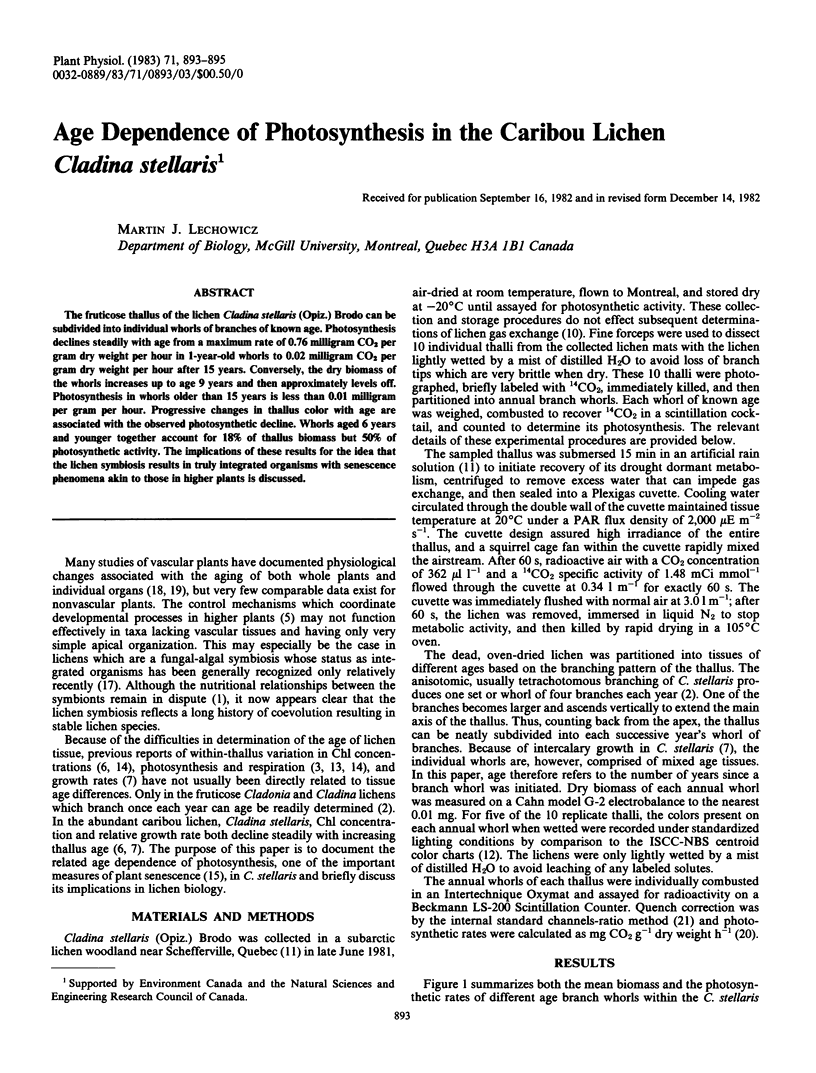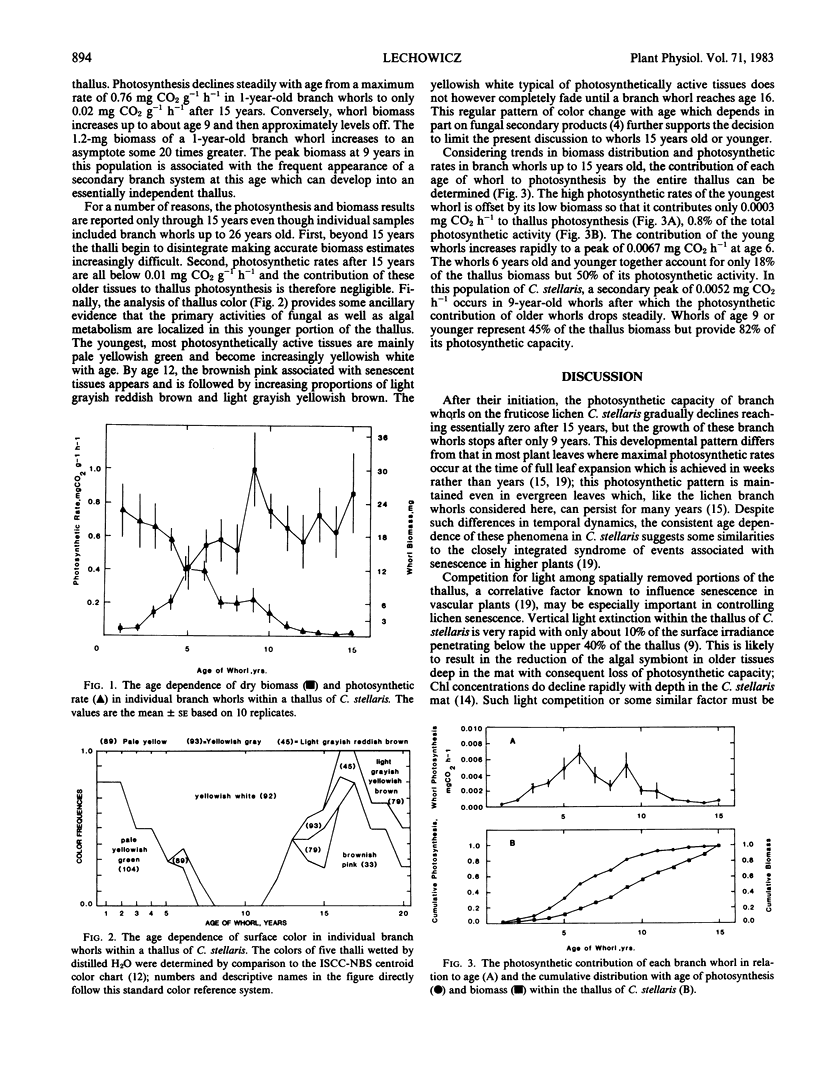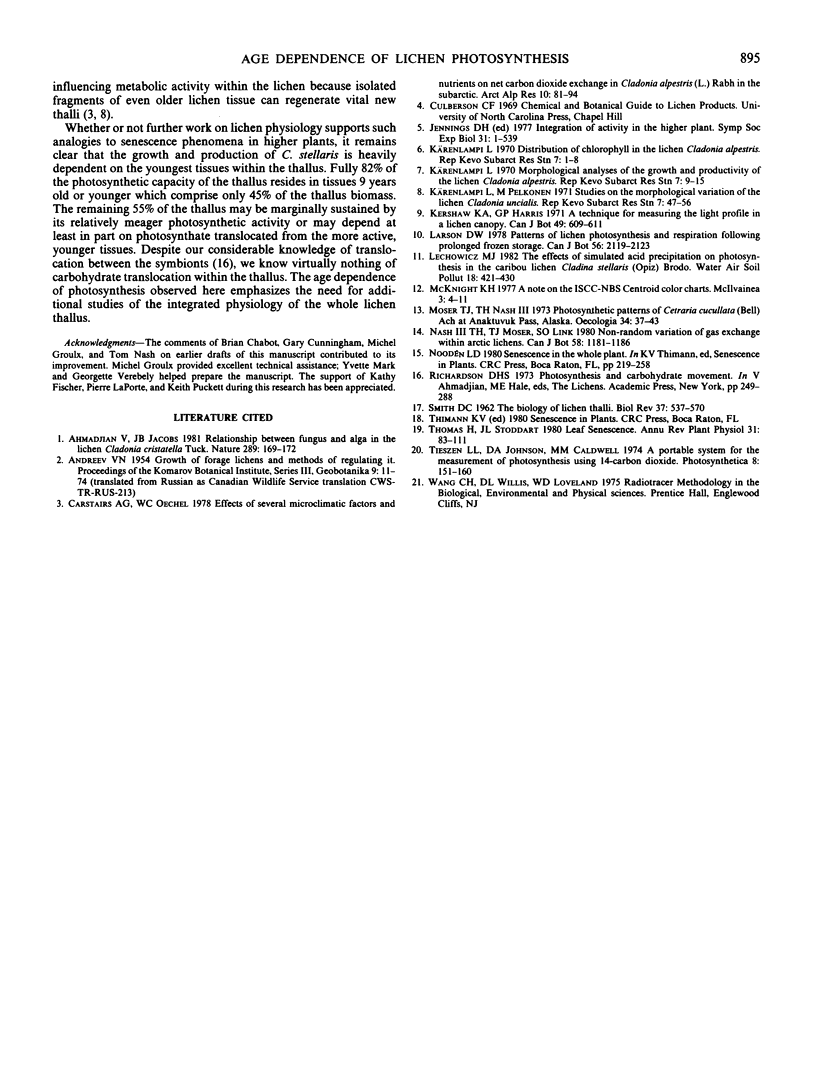Abstract
The fruticose thallus of the lichen Cladina stellaris (Opiz.) Brodo can be subdivided into individual whorls of branches of known age. Photosynthesis declines steadily with age from a maximum rate of 0.76 milligram CO2 per gram dry weight per hour in 1-year-old whorls to 0.02 milligram CO2 per gram dry weight per hour after 15 years. Conversely, the dry biomass of the whorls increases up to age 9 years and then approximately levels off. Photosynthesis in whorls older than 15 years is less than 0.01 milligram per gram per hour. Progressive changes in thallus color with age are associated with the observed photosynthetic decline. Whorls aged 6 years and younger together account for 18% of thallus biomass but 50% of photosynthetic activity. The implications of these results for the idea that the lichen symbiosis results in truly integrated organisms with senescence phenomena akin to those in higher plants is discussed.
Full text
PDF


Selected References
These references are in PubMed. This may not be the complete list of references from this article.
- Trentini G. P., De Gaetani C. F., Villani M., Valestra N. Modificazioni pinealiche nel ratto trattato con clomifene. Boll Soc Ital Biol Sper. 1971 Oct 30;47(20):609–611. [PubMed] [Google Scholar]


